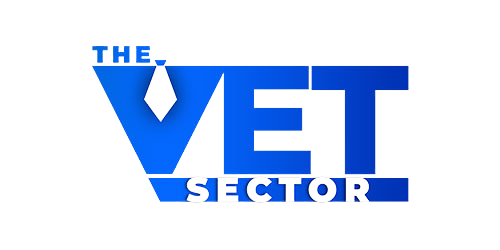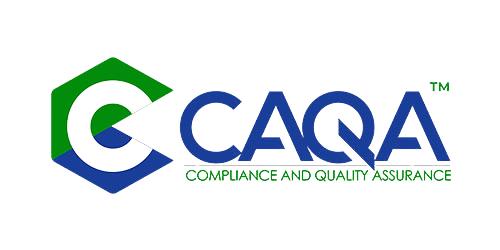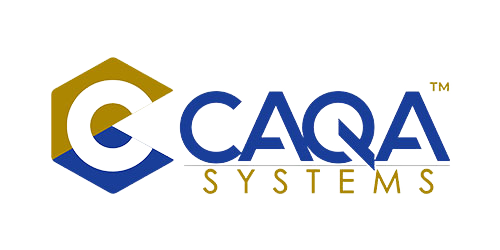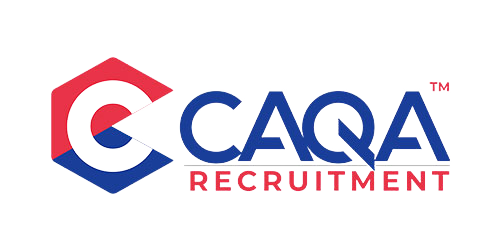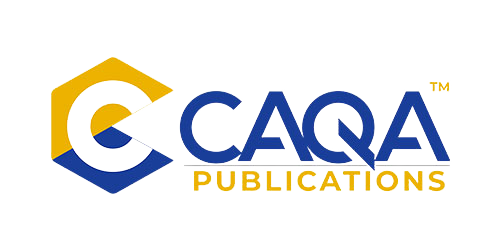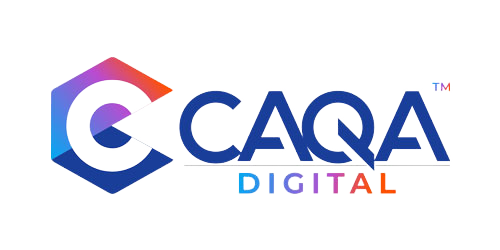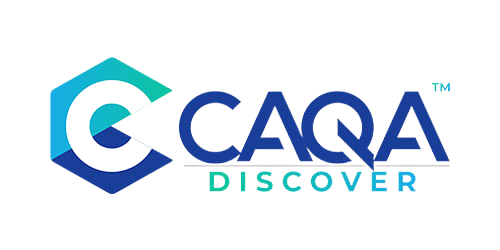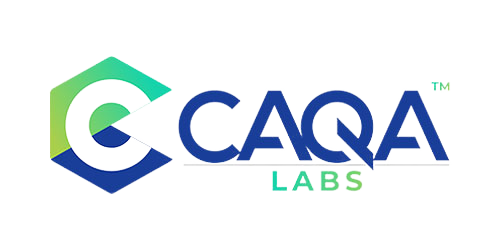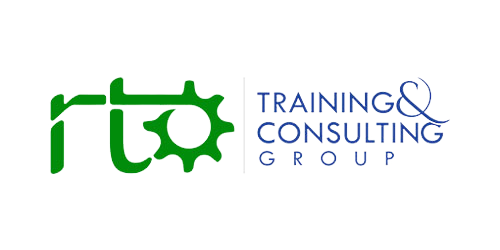THE PARADIGM SHIFT: STUDENT SUPPORT MOVES FROM AFTERTHOUGHT TO CENTERPIECE
July 2025 will mark more than just another regulatory update for Australia's vocational education and training sector. Hidden among the numerous changes within the revised Standards for RTOs lies perhaps the most transformative shift of all: the explosive elevation of student support from a single compliance clause to an entire quality area with its own detailed requirements and expectations. This represents nothing less than a revolution in how RTOs must conceptualise, resource, and deliver support throughout the student journey.
The implications of this shift are seismic. For many RTOs—particularly those operating in online environments, with high student-to-trainer ratios, or specialising in Recognition of Prior Learning—the economic and operational impacts will be profound and potentially disruptive. Business models built around minimal support infrastructure will be fundamentally challenged, while organisations must rapidly develop new capabilities in wellbeing, mental health support, and proactive intervention.
Yet beyond the compliance implications lies an even more significant truth: the standards are finally catching up with what educational research has long demonstrated—that comprehensive, timely, and personalised student support is not merely a nice-to-have addition but the very foundation of educational quality and student success. The 2025 Standards represent a long-overdue recognition that without robust support systems, even the most meticulously designed training and assessment activities will fail to produce the outcomes that students, industry, and the broader community rightfully expect.
THE HISTORICAL CONTEXT: FROM SINGLE CLAUSE TO QUALITY CORNERSTONE
The elevation of student support within the standards reflects a dramatic evolution in regulatory thinking about what constitutes quality in vocational education.
THE COMPLIANCE AFTERTHOUGHT: STUDENT SUPPORT UNDER THE 2015 STANDARDS
Under the Standards for RTOs 2015, student support was addressed through a single, relatively generic clause (1.7) that required RTOs to:
-
Identify the particular needs of individual learners
-
Provide access to educational and support services necessary for completion
-
Document these services in a readily available format
This minimalist approach led to equally minimalist implementation by many RTOs. Support often consisted of little more than a page in a student handbook listing theoretical services, with little proactive outreach or ongoing engagement. For online students, particularly, support was frequently limited to an email address that received intermittent responses, with no structured access to trainers or assessors beyond basic assessment feedback.
This compliance-focused approach contributed directly to the sector's persistent completion challenges, with some online providers seeing fewer than 30% of enrolled students successfully complete their qualifications. The connection between inadequate support and poor completion rates became increasingly difficult to ignore.
THE QUALITY REVOLUTION: SUPPORT UNDER THE 2025 STANDARDS
The 2025 Standards radically reimagine student support through dedicated quality requirements in Standards 2.3 and 2.4. The new framework demands that RTOs:
-
Adapt support approaches to the specific needs of different student cohorts
-
Proactively provide support throughout the entire learner journey, not just at enrollment
-
Ensure genuine, scheduled access to trainers and assessors
-
Address wellbeing and mental health, not just academic progress
-
Regularly communicate about available support and how to access it
-
Actively monitor academic progress and intervene when necessary
This represents not just a quantitative increase in compliance requirements but a qualitative transformation in how support is conceptualised—from a reactive, on-request service to a proactive, integrated component of the learning experience.
THE FOUNDATION SKILLS IMPERATIVE: STARTING RIGHT TO FINISH STRONG
One of the most significant changes in the 2025 Standards is the explicit focus on assessing and supporting language, literacy, numeracy, and digital (LLND) skills before course commencement.
THE FRONT-LOADING REQUIREMENT: ASSESSMENT BEFORE COMMENCEMENT
The new standards create a clear expectation that RTOs will:
-
Assess foundation skills early enough to determine course suitability
-
Use this assessment to identify potential barriers to completion
-
Develop targeted support strategies based on individual needs
-
Clearly communicate course requirements and expectations
This pre-emptive approach represents a fundamental shift from the reactive model common under the 2015 Standards, where foundation skill gaps were often identified only after a student began struggling with course content.
THE ONGOING MONITORING MANDATE: BEYOND ONE-OFF ASSESSMENT
Beyond initial assessment, the 2025 Standards require RTOs to:
-
Regularly check academic progress throughout the learning journey
-
Adapt support strategies as new needs emerge
-
Maintain documentation of both assessment and support activities
-
Create feedback loops that inform both individual support and systemic improvements
This continuous monitoring approach recognises that student' needs evolve throughout their educational journey and that effective support must be equally dynamic and responsive.
THE COMMUNICATION IMPERATIVE: CLARITY AND TRANSPARENCY
A critical element of the foundation skills focus is clear communication about:
-
Course requirements and demands
-
Available support services and how to access them
-
Potential challenges based on foundation skill levels
-
Reasonable adjustments and alternative pathways
This transparency ensures that students make informed decisions about their education and understand what support is available to them throughout their learning journey.
THE ACCESS REVOLUTION: REDEFINING REASONABLE SUPPORT
Perhaps the most operationally significant aspect of the new standards is the requirement for "reasonable access" to trainers and assessors. This seemingly straightforward term conceals complex implications for RTO business models, staffing structures, and delivery approaches.
THE SCHEDULING MANDATE: DEFINED ACCESS, NOT VAGUE AVAILABILITY
Under the 2025 Standards, reasonable access means:
-
Scheduled, predictable opportunities for one-on-one support
-
Clear communication about when and how trainers can be reached
-
Multiple channels appropriate to the delivery mode (face-to-face, online, or blended)
-
Documented processes that can be evidenced during audits
This scheduled approach represents a sharp departure from the vague "email if you need help" model that has characterised many online and flexible delivery programs.
THE RATIO REALITY: SUSTAINABLE SUPPORT MODELS
The new standards create implicit expectations about appropriate student-to-trainer ratios:
-
Ratios of 1:40 to 1:60 are typically considered manageable in many settings
-
Ratios up to 1:200 may be sustainable in some traineeship/apprenticeship models with workplace support
-
Ratios approaching 1:500, seen in some online environments, are increasingly viewed as problematic for student engagement and completion
While the standards do not specify exact ratios, auditors may increasingly expect RTOs to justify their staffing models with data on student outcomes and engagement. RTOs with exceptionally high ratios may find themselves facing scrutiny about how meaningful support can be provided within such constrained resources.
THE DOCUMENTATION IMPERATIVE: EVIDENCING ACCESS AND SUPPORT
The 2025 Standards create significant documentation requirements related to trainer access:
-
Position descriptions and contracts must specify support responsibilities
-
Training calendars must include scheduled support sessions
-
Student management systems must track interactions, requests, and outcomes
-
Student surveys and feedback must confirm that promised access is being delivered
This documentation goes beyond mere policy statements to include concrete evidence that scheduled access is not just promised but delivered consistently across all cohorts and delivery modes.
THE COHORT-SPECIFIC APPROACH: TAILORED SUPPORT FOR DIVERSE NEEDS
The 2025 Standards explicitly recognise that different student cohorts have different support needs—a recognition that challenges the one-size-fits-all approach common in many RTOs.
THE SEGMENTATION REQUIREMENT: IDENTIFYING UNIQUE NEEDS
RTOs must now:
-
Identify the specific characteristics and needs of different learner groups
-
Tailor support strategies to each cohort's particular circumstances
-
Document these differentiated approaches in Training and Assessment Strategies
-
Ensure that support staff understand and can implement cohort-specific approaches
This segmented approach recognises that job seekers, school leavers, remote learners, and professionals all have different support requirements that cannot be adequately addressed through generic services.
THE FAIRNESS BALANCE: EQUITY WITHOUT UNIFORMITY
A sophisticated understanding of fairness underlies the cohort-specific approach:
-
Fairness means giving each student what they need, not treating everyone identically
-
Different cohorts may receive different types and levels of support based on their specific circumstances
-
RTOs must be transparent about these differences and their rationale
-
The goal is equitable outcomes, not identical processes
This nuanced approach prevents both the "lowest common denominator" trap, where support is limited to what can be offered identically to all students, and the confusion that can arise when support appears inconsistent across different cohorts.
THE DOCUMENTATION DIRECTIVE: CLARITY IN TRAINING AND ASSESSMENT STRATEGIES
The requirement to document cohort-specific support in Training and Assessment Strategies represents a significant shift:
-
Support is no longer an add-on but an integral part of training design
-
Different delivery modes or student groups within the same qualification may have distinct support strategies
-
These strategies must be explicitly linked to the characteristics and needs of each cohort
-
Generic statements about support are no longer sufficient
This integration of support into the core training design documents signals its elevated importance within the overall educational approach.
THE ONLINE CHALLENGE: CLOSING THE DIGITAL SUPPORT GAP
Online delivery presents particular challenges under the 2025 Standards, with significant implications for RTOs that have built business models around minimal-support online delivery.
THE ENGAGEMENT IMPERATIVE: BEYOND LOGIN CREDENTIALS
The new standards challenge the "log in and good luck" approach common in some online environments:
-
Online students must have scheduled, predictable access to trainers and assessors
-
Clear communication channels—discussion boards, chat, scheduled tutorials—must be established and maintained
-
Technology must support engagement, not just content delivery
-
Progress must be actively monitored with timely intervention for disengaged students
This engagement-focused approach represents a fundamental challenge to online business models built around high student-to-trainer ratios and minimal proactive support.
THE TECHNOLOGY INVESTMENT: SYSTEMS FOR SUPPORT AT SCALE
Meeting the new support requirements in online environments will require significant technology investment:
-
Robust learning management systems with engagement tracking and automated alerts
-
Student management systems that integrate with learning platforms to provide a holistic student view
-
Communication tools that facilitate both synchronous and asynchronous support
-
Data analytics that identify at-risk students before they disengage completely
These technology investments may represent substantial costs for RTOs accustomed to minimal-infrastructure online delivery, but they are increasingly essential for both compliance and quality outcomes.
THE AI OPPORTUNITY: TECHNOLOGY-ENABLED SUPPORT
Emerging technologies offer potential solutions to the challenge of providing personalised support at scale:
-
AI-powered tutoring systems can provide 24/7 assistance with common questions
-
Predictive analytics can identify at-risk students based on engagement patterns
-
Automated intervention triggers can ensure timely support without constant manual monitoring
-
Virtual reality can create more engaging and supportive online learning environments
These technological approaches do not replace human support but can extend its reach and effectiveness, particularly in high-volume online environments.
THE WELLBEING REVOLUTION: MENTAL HEALTH MOVES CENTER STAGE
Perhaps the most profound philosophical shift in the 2025 Standards is the explicit inclusion of wellbeing and mental health within the scope of student support—a recognition that learning outcomes are inextricably linked to overall student wellness.
THE HOLISTIC MANDATE: SUPPORT BEYOND ACADEMICS
The new standards require RTOs to:
-
Address student wellbeing and mental health as core components of support
-
Ensure staff are equipped to identify and respond to wellbeing concerns
-
Develop appropriate referral pathways for specialised support
-
Create learning environments that promote positive mental health
This holistic approach recognises that academic challenges often have non-academic roots and that effective support must address the whole student, not just their educational needs.
THE CAPABILITY IMPERATIVE: STAFF READINESS FOR WELLBEING SUPPORT
Meeting the well-being requirements will require significant staff capability development:
-
Trainers and assessors may need mental health first aid or similar qualifications
-
Student support officers may require more specialised training in wellbeing and counselling
-
All staff should understand referral pathways and the limits of their expertise
-
De-escalation training may be particularly valuable for front-line staff
This capability development represents a significant investment, but one that pays dividends not just in compliance but in staff confidence and student outcomes.
THE CURRICULUM INTEGRATION: EMBEDDING WELLBEING IN LEARNING
An innovative approach to the wellbeing mandate involves embedding wellbeing directly into course structures:
-
Incorporating wellbeing units from training packages into qualifications
-
Creating dedicated time within programs to address wellbeing issues
-
Using wellbeing activities as contexts for developing other skills
-
Ensuring assessment approaches consider wellbeing impacts
This integration approach ensures that well-being is not an add-on but a core component of the learning experience, with dedicated time, resources, and focus.
THE BUSINESS IMPACT: OPERATIONAL AND ECONOMIC IMPLICATIONS
The expanded student support requirements have significant implications for RTO business models, staffing structures, and financial sustainability.
THE ECONOMIC REALITY: INVESTMENT AND RETURN
Implementing comprehensive support systems represents a substantial investment:
-
Technology costs for robust student management and learning systems
-
Staff costs for dedicated support roles and additional trainer time
-
Training costs for capability development across all staff
-
Opportunity costs as resources are directed toward support rather than expansion
However, these investments must be viewed against the potential returns:
-
Improved completion rates and student satisfaction
-
Reduced compliance risks and associated costs
-
Enhanced reputation and competitive advantage
-
More sustainable business models based on quality rather than volume
The most forward-thinking RTOs will view these investments not as compliance costs but as strategic positioning for long-term sustainability.
THE STAFFING REVOLUTION: NEW ROLES AND RESPONSIBILITIES
Meeting the new support requirements will necessitate evolved staffing models:
-
Explicit allocation of trainer time for student support activities
-
Potential new roles such as student success coaches or wellbeing coordinators
-
Clearer delineation of support responsibilities in position descriptions
-
Updated contracts that specify support obligations and scheduled availability
These changes may require significant rethinking of staff workloads, compensation models, and organisational structures, particularly for RTOs that have operated with lean staffing and high student-to-trainer ratios.
THE BUSINESS MODEL CHALLENGE: VOLUME VS. QUALITY
Perhaps most fundamentally, the new standards challenge business models built around high-volume, low-support delivery:
-
Online programs with extremely high student-to-trainer ratios may be unsustainable
-
RPL models that provide minimal guidance to candidates may require restructuring
-
Price points may need adjustment to reflect the true cost of quality support
-
Competitive differentiation may shift from price to support quality and student outcomes
This evolution may be painful for some providers, but ultimately creates a more sustainable sector where quality and outcomes, rather than volume and price, drive business success.
THE PRACTICAL IMPLEMENTATION: STRATEGIES FOR SUCCESS
Implementing the expanded support requirements demands strategic thinking, innovative approaches, and a willingness to reimagine core business processes.
THE SYSTEM INTEGRATION: TECHNOLOGY AS ENABLER
Effective implementation requires integrated systems that:
-
Track student progress across multiple dimensions
-
Facilitate communication between students and staff
-
Document support interactions and outcomes
-
Generate alerts when intervention is needed
-
Provide data for continuous improvement
These integrated systems reduce administrative burden while ensuring comprehensive support and robust compliance evidence.
THE COMMUNICATION STRATEGY: TRANSPARENCY AND PROACTIVITY
Clear, ongoing communication is essential for effective support implementation:
-
Multiple channels ensure information reaches all students
-
Regular reminders about available services maintain awareness
-
Proactive outreach identifies issues before they become crises
-
Transparent explanations of support differences between cohorts prevent confusion
This communication strategy ensures that support services are not just available but actually utilised by students when needed.
THE CURRICULUM APPROACH: EMBEDDING SUPPORT IN LEARNING
Integrating support directly into the curriculum and delivery provides several advantages:
-
Dedicated time for support activities within the course structures
-
Natural opportunities for identifying and addressing emerging needs
-
Direct connection between support and learning outcomes
-
Clear evidence of support for provision for compliance purposes
This integrated approach recognises that support is not separate from learning but an essential component of the educational experience.
CONCLUSION: THE FUTURE OF STUDENT SUPPORT IS NOW
The 2025 Standards represent a watershed moment for student support in Australia's VET sector. By elevating support from a single compliance clause to a comprehensive quality area, the standards finally acknowledge what educational research has long demonstrated: that effective support is not peripheral to quality education but its very foundation.
This revolution presents both challenges and opportunities. RTOs with business models built around minimal support will face significant adaptation pressures, while those that have already invested in comprehensive support systems will find themselves well-positioned for both compliance and market leadership.
The most successful RTOs will be those that embrace this transformation, not as a compliance burden but as an opportunity to create more effective, engaging, and impactful educational experiences. By investing in systems, developing staff capability, reimagining business models, and placing student success at the centre of their operations, these organisations will not just meet the new standards but exceed them, setting new benchmarks for quality in vocational education.
The support revolution has begun. The future belongs to those RTOs that recognise support not as a cost centre but as the very heart of educational quality and student success.








